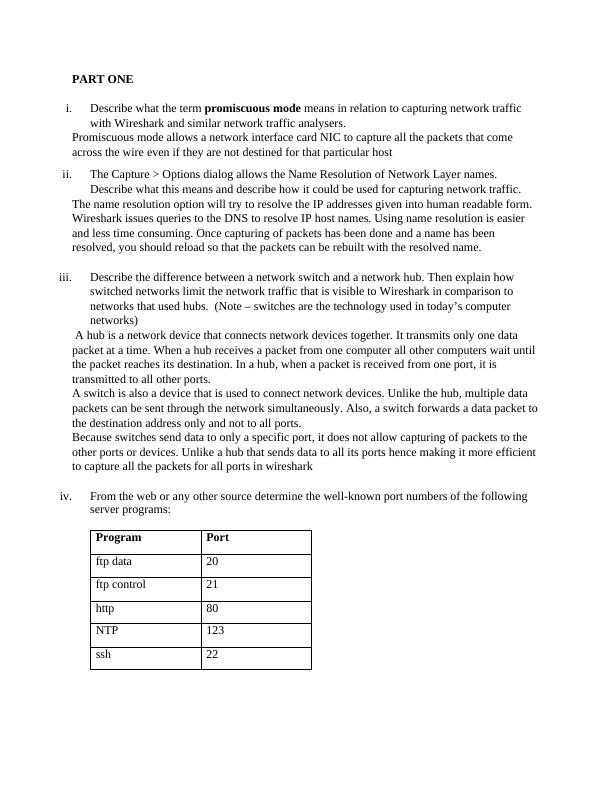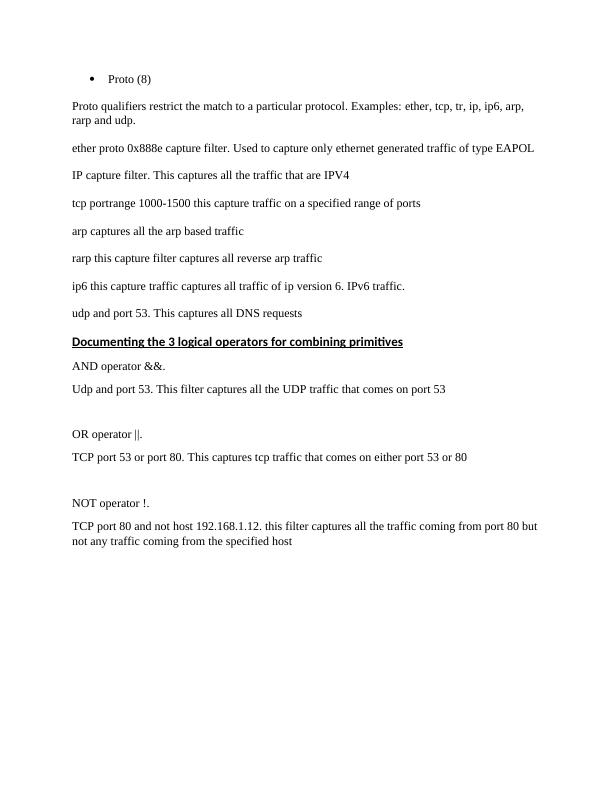Wireshark Network Traffic Analysis
This assignment requires students to become familiar with Wireshark capture filters, document the qualifiers used in capture filters, construct and use capture filters to capture specific network traffic, and include screen shots of captured network traffic with associated discussion.
9 Pages1507 Words432 Views
Added on 2023-06-11
About This Document
This article covers the basics of network traffic analysis with Wireshark, including promiscuous mode, name resolution, network switches vs hubs, BPF qualifiers, logical operators, and capture filters. It also includes examples of capture filters for specific types of network traffic.
Wireshark Network Traffic Analysis
This assignment requires students to become familiar with Wireshark capture filters, document the qualifiers used in capture filters, construct and use capture filters to capture specific network traffic, and include screen shots of captured network traffic with associated discussion.
Added on 2023-06-11
ShareRelated Documents
End of preview
Want to access all the pages? Upload your documents or become a member.
ITECH1003 Networking Assignment
|8
|855
|41
Wireshark Capture Filter Assignment
|7
|661
|411
Wireshark Capture Filter Assignment
|7
|712
|263
IT Wireless: WLAN Tools, Packet Capture, and Wireless Technologies
|16
|2601
|65
Report on Network Forensics
|12
|1261
|65
Lab Exercises on Digital Security Fundamentals, Cryptographic Principles, Symmetric Encryption, Asymmetric Encryption, and Secure Hash Functions
|33
|6001
|366



